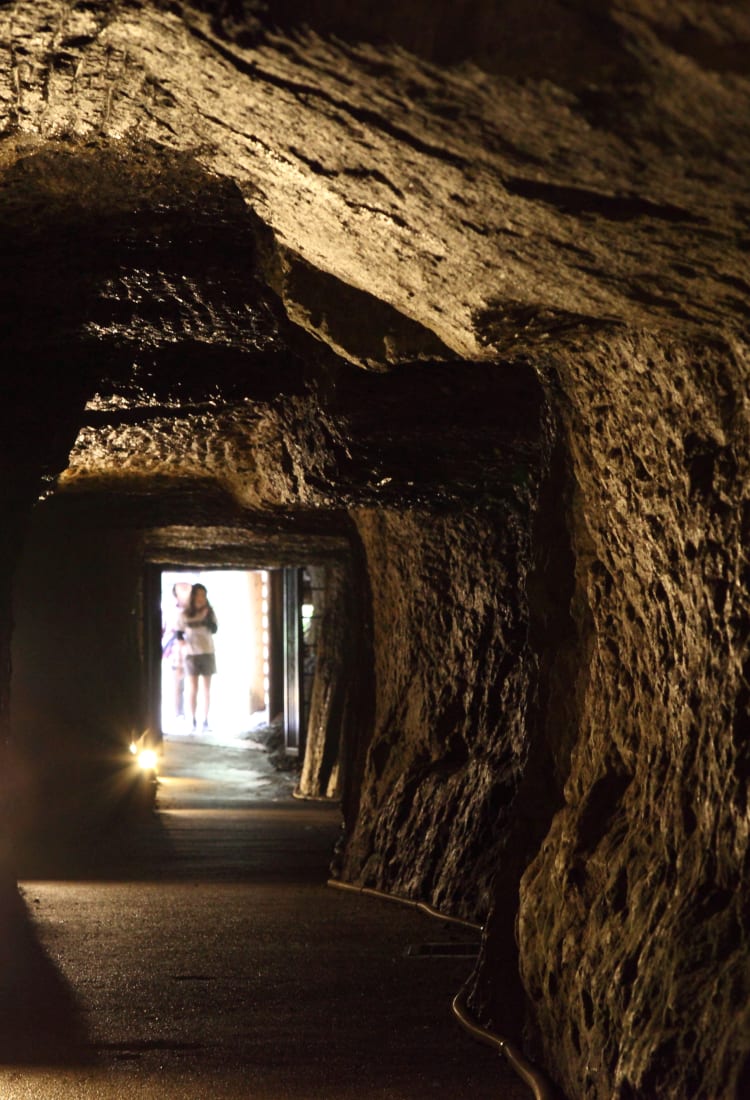

SHIMANE Mt. Sanbe & Iwami A third of the world's silver was once supplied by Japan, and much was mined here
A third of the world's silver was once supplied by Japan, and much was mined here
Mt. Sanbe , sitting near the center of Shimane, belongs to Daisen-Oki National Park and is the main peak in a range of volcanic mountains. It's an iconic symbol of the Iwami area, which boasts natural hot springs. Nearby is Iwami Ginzan, a registered World Heritage site.
The area is full of the charms of an earlier age. When you have explored the history and culture, the area's forests and beautiful beaches are uncrowded and well worth exploring.
Don't Miss
- The views from the top of Mt. Sanbe
- A mineshaft that runs through a mountain
- Kotogahama, the "singing sands" beach
How to Get There
Mt. Sanbe and Iwami Ginzan are a 20-minute drive or 30-minute bus ride from Odashi Station on the JR Sanin Main Line, which runs along the west coast of western Japan.
By limited express train Izumo City , with its great shrine, is only 20 minutes away, and Matsue is an hour away. The shinkansen from Okayama takes three and a half hours, or three hours from Shin-Yamaguchi. Highway buses from Hiroshima take about two and a half hours.
A World Heritage area with the charms of a past age
Pass through the most popular, eastern area of Shimane to arrive in the Iwami area, which has an ancient atmosphere. Iwami, located in the western part of Shimane, is home to Iwami Ginzan Silver Mine , which was registered as a World Heritage site in 2007. The beautiful natural landscapes are a place where traditional lifestyles thrive, and the environment is preserved. A popular tourist attraction of the area is Mt. Sanbe .


Dormant for 4,000 years
The rounded slopes and peaks of Mt. Sanbe , part of Daisen-Oki National Park, overlook quiet, narrow, wooded valleys dotted with small farms. It's not a very high mountain, but it rises above the surrounding countryside and gives you expansive 360-degree views.
There are plenty of trails to hike up, some more strenuous than others. Some of the trails pass through wide-open grassy areas and others through forests of beech. Surrounding the peak's base are several hot springs, and around the start of the most popular, and shortest, trailhead are camping areas, parks, a nature museum and other facilities.
Nearby is the Sanbe Jomon-no-Mori Museum , a unique facility that exhibits a buried forest, where visitors can see giant trees that were buried about 4,000 years ago when Mt. Sanbe last erupted.
A third of the world's silver once came from Japan, and much of it came from here
From the top of Mt. Sanbe , you see a serrated line of mountains that were once home to one of the richest silver mines on the planet. Iwami Ginzan , which means "Silver Mountain of Iwami," is now a UNESCO World Heritage site, set in a sparsely populated region that reportedly once had a quarter of a million people working for it.
During the 16th and 17th centuries, one-third of the world's silver was mined in Japan, and the majority came from here. It was a driving force of the economy of Japan and its trade with the outside world. At the World Heritage Center, you can learn all about the mine and decide which of the many sites spread across the area you want to visit.

Many people explore one of the mineshafts that are open to the public and pass right through the mountain. Omori is well worth a visit, a one-street town below the mines that looks much as it did centuries ago and where you can visit homes of the samurai who controlled the mines and of the wealthy merchants who made their fortunes here.
The World Heritage site includes the roads that stretches from the mines to the coastal port, including Yunotsu , a famous historic hot spring town.
Glorious, secluded beaches
Something else you will see from the top of Mt. Sanbe are some fantastic beaches. which are comfortable and not too crowded. One of the best is Kotogahama—more than one kilometer of fine white sand with turquoise seas. The sands here are said to sound like a koto as you walk on them, and at the nearby Nima Sand Museum , you can see artworks made from the sand as well as the world's largest hourglass, which takes one full year before it needs turning.






























































